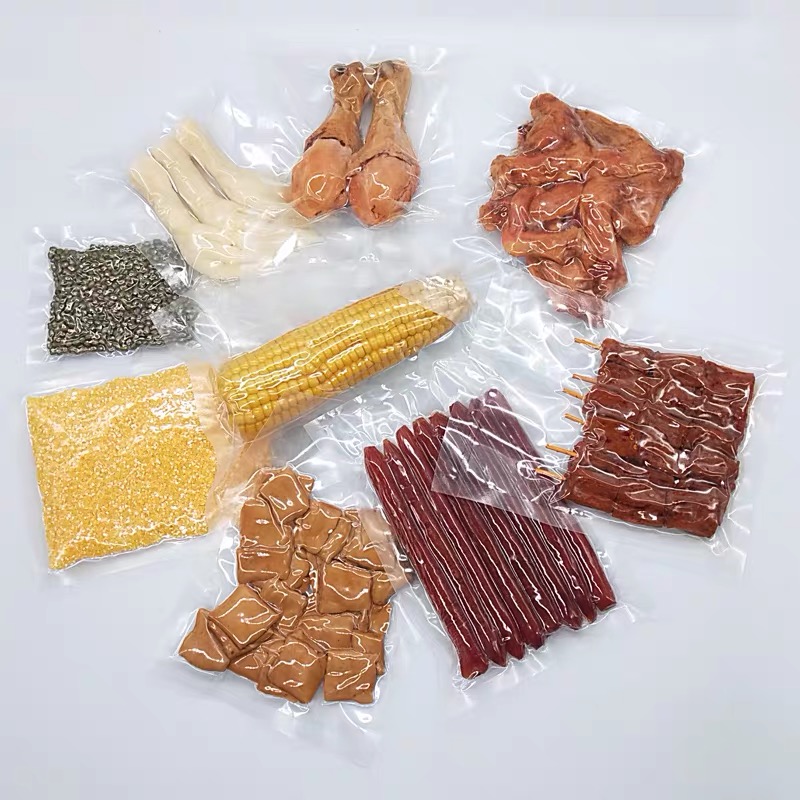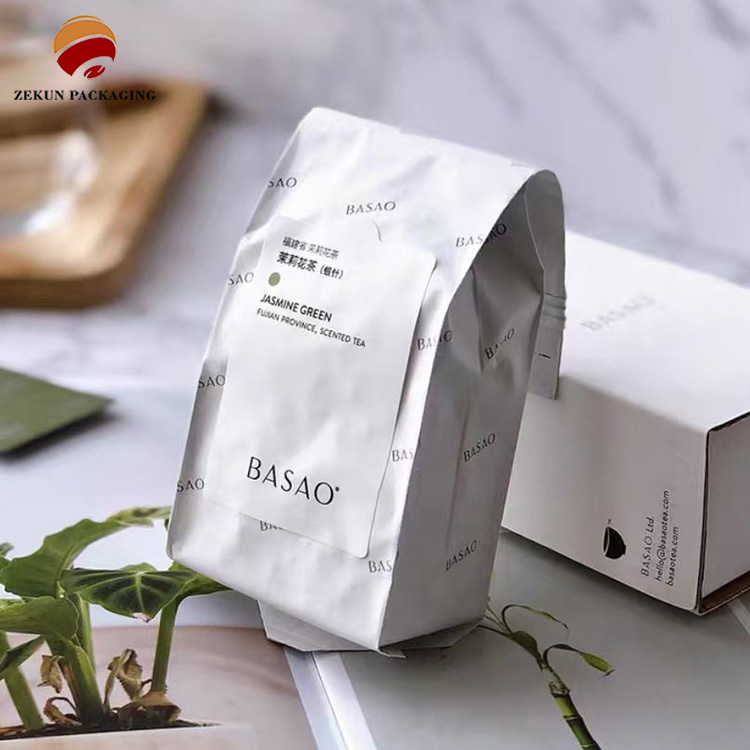Food vacuum and vacuum inflatable flexible packaging technology occupies a certain position in food packaging technology, and some functions and functions cannot be easily replaced by other packaging technologies. my country’s vacuum packaging technology was developed in the early 1980s, and vacuum inflatable packaging technology began to be used in small quantities in the early 1990s. With the promotion of small packaging and the development of supermarkets, its application scope will become more and more extensive. Some will gradually replace hard packaging, and the prospects will be very promising.
The main function of vacuum packaging is to remove oxygen in order to help prevent food from spoiling. The principle is also relatively simple. Because food mildew and spoilage are mainly caused by the activities of microorganisms, most microorganisms (such as molds and yeasts) need oxygen to survive. Yes, and vacuum packaging uses this principle to extract oxygen in the packaging bag and food cells, so that microorganisms lose their “survival environment”. Experiments show that when the oxygen concentration in the packaging bag is ≤ 1%, the growth and reproduction speed of microorganisms will drop sharply, and the oxygen concentration ≤ 0.5%, most microorganisms will be inhibited and stop reproducing. (Note: Vacuum packaging cannot inhibit the growth of anaerobic bacteria and the deterioration and discoloration of food caused by enzyme reactions, so it needs to be combined with other auxiliary methods, such as refrigeration, quick freezing, dehydration, high temperature sterilization, irradiation sterilization, microwave sterilization, salt Marinated etc.)

In addition to inhibiting the growth and reproduction of microorganisms, vacuum deoxygenation has another important function to prevent food oxidation. Because fats and oils contain a large amount of unsaturated fatty acids, they are oxidized under the action of oxygen, which will make the food taste and deteriorate. In addition, oxidation also causes the loss of vitamin A and vitamin C, and the unstable substances in food pigments are affected by oxygen to darken the color. Therefore, deoxygenation can effectively prevent food from spoiling and maintain its color, aroma, taste and nutritional value.
In addition to the oxygen-removing and quality-preserving functions of vacuum packaging, the main functions of vacuum inflatable packaging include compression resistance, gas barrier, and freshness preservation, which can more effectively maintain the original color, aroma, taste, shape and shape of food for a long time. Nutritional value. In addition, there are many foods that are not suitable for vacuum packaging, but must be vacuum-filled packaging. Such as crispy and fragile foods, foods that are easy to agglomerate, foods that are easy to deform and run out of oil, foods with sharp edges or corners or high hardness that will pierce the packaging bag, etc. After the food is vacuum-inflated and packaged, the inflation pressure inside the packaging bag is stronger than the atmospheric pressure outside the packaging bag, which can effectively prevent the food from being crushed and deformed under pressure, and does not affect the appearance of the packaging bag and the printing and decoration.

The vacuum inflatable package is filled with a single gas of nitrogen, carbon dioxide, oxygen or a mixed gas of 2-3 gases after being vacuumed. Among them, nitrogen is an inert gas, which plays a filling role and keeps positive pressure inside the bag to prevent air outside the bag from entering the bag and protect the food. Carbon oxide gas can be dissolved in various fats or water to form weakly acidic carbonic acid, which has the activity of inhibiting molds, spoilage bacteria and other microorganisms. Oxygen can inhibit the growth and reproduction of anaerobic bacteria, and maintain the freshness and color of fruits and vegetables. High concentration of oxygen can keep fresh meats bright red.
Application range of vacuum packaging:
Cured products: sausages, ham, bacon, duck, etc.; pickles: mustard, dried radish, kohlrabi, kimchi, etc.; soy products: dried tofu, vegetarian chicken, bean paste, etc.; cooked food products: roast chicken, roast duck, sauce beef, etc. Convenience food: rice, instant noodles, cooked vegetables, etc.; soft canned food: bamboo shoots in water, fruits in syrup, eight-treasure porridge, etc.
Application range of vacuum inflatable packaging:
Tea, nuts, melon seeds, meat floss, etc.; fried potato chips, puffed food, fruit and vegetable chips, etc.; cakes, moon cakes, etc.; various powders, food additives; various native products, precious Chinese medicinal materials; various dehydrated vegetables .
In addition, there are many foods that are not suitable for vacuum packaging and must be vacuum-filled packaging. Such as crunchy and fragile foods, foods that are easy to agglomerate, foods that are easy to deform and run out of oil, foods with sharp edges or corners or high hardness that will pierce the packaging bag, etc.

1 Comment
Very good article. I absolutely love this site. Thanks!